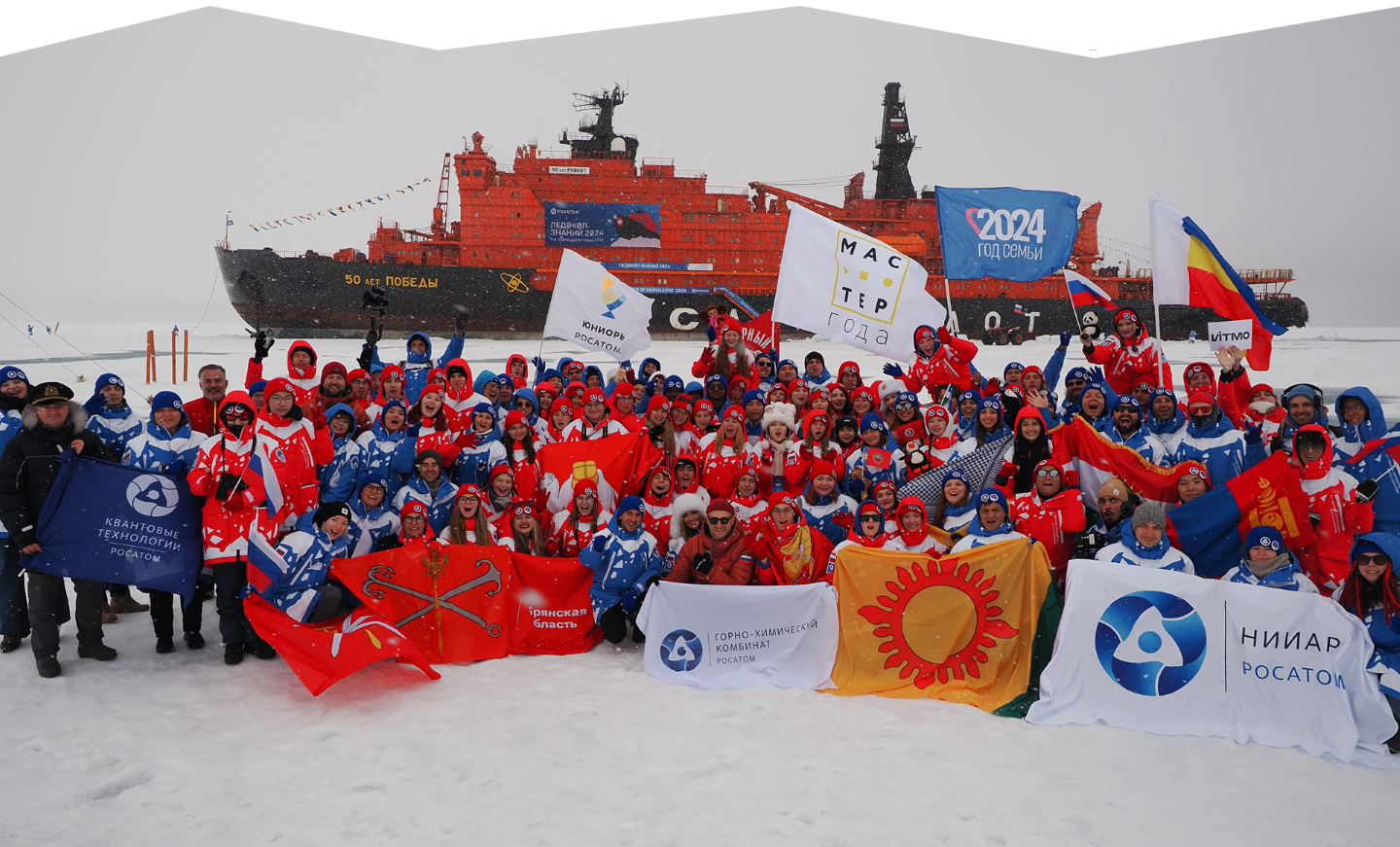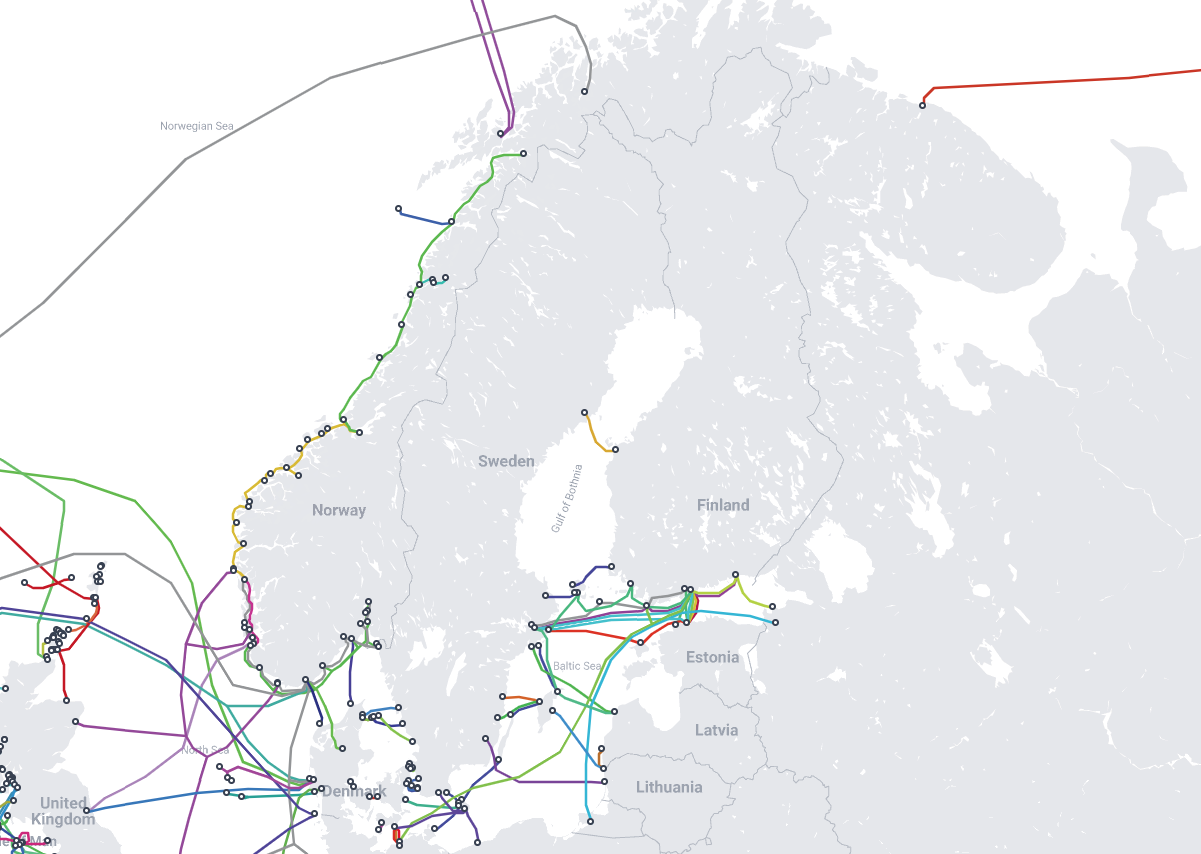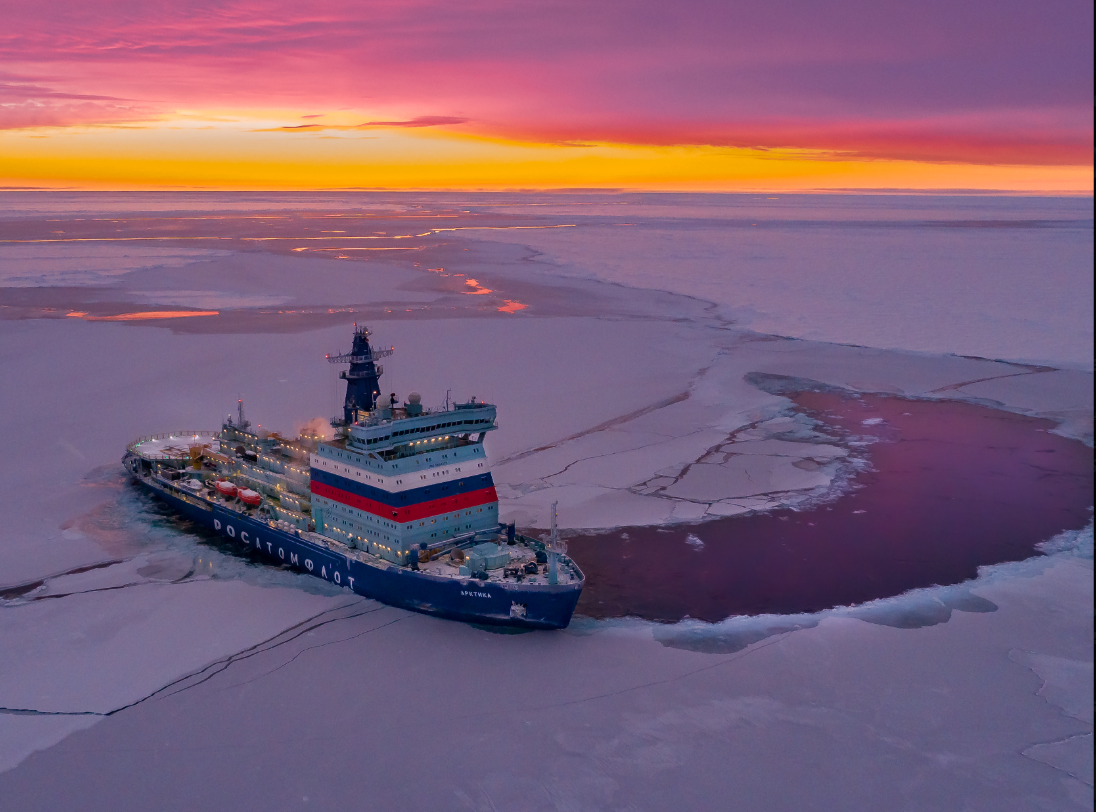
Russia Sends Children to North Pole on Nuclear-Powered Icebreakers
Russia Sends Children to North Pole on Nuclear-Powered Icebreakers
Executive Summary:
- Russia has launched this year’s “Icebreaker of Knowledge” program, sending children to the North Pole aboard a nuclear-powered icebreaker as part of Moscow’s broader Arctic strategy.
- The expedition blends education with geopolitical messaging about Russia’s leadership in Arctic affairs as other states, including the United States and the People’s Republic of China, seek to expand their icebreaker capabilities.
- Taking children on educational expeditions to the North Pole may serve to distract from broader problems with Russia’s icebreaker fleet and slow progress in developing new icebreakers.
On April 1, applications opened in Russia for schoolchildren to apply to travel to the North Pole on one of the country’s nuclear-powered icebreakers as part of the project, “Icebreaker of Knowledge” (Ледокол знаний, Lyedokol Znanii) (Polus, accessed April 12). The program is not only a form of Arctic outreach and education but also an assertion of Russia’s technological prowess and its ability to operate seamlessly in one of the world’s most extreme environments, even to the extent that it can host children in such an environment. While Russia is sending children to the North Pole on one of its nuclear-powered icebreakers, other states are still working to create even a basic fleet of icebreakers, nuclear-powered or otherwise. This is yet another example of how Moscow uses the capabilities it has to project the confidence of a superpower.
The call for applications for this year’s participants in “Icebreaker of Knowledge” comes as Russia is expanding its icebreaker fleet, which is already the largest in the world. Russia operates a fleet of eight nuclear-powered icebreakers and 34 diesel-electric icebreakers (Gazeta, March 27). According to Russian President Vladimir Putin, “We need to strengthen these positions, put into operation new generation icebreakers, including nuclear ones, which only Russia has now. No one in the world has such a fleet” (Gazeta, March 27). These investments are framed as essential to securing Russia’s long-term Arctic interests, particularly in the context of increasing foreign, especially Western, attention toward Arctic resources and maritime routes.
The use of its nuclear icebreaker fleet to provide educational experiences for children is unique to Russia. “Icebreaker of Knowledge” has been operating for 5 years and is hosted by Rosatom, Russia’s state-owned nuclear corporation (Polus, accessed April 12). Students will be selected for the expedition after passing a series of tests and completing projects on one of three tracks—researcher, engineer, or innovator (Polus, accessed April 16). The expedition will depart in August this year from Murmansk, one of Russia’s northernmost cities located in the Arctic, and will travel with 70 schoolchildren aged 14 to 16 for 4 days across 1,230 nautical miles (Municipal District of Pevek, April 4).
The expedition is intended to promote achievements of the Russian nuclear industry and to help the students “discover their potential, decide on a profession, and take the first steps toward choosing their career” (Polus, April 3, 2024; TASS, April 1; VKontakte/@icebreaker_ru, accessed April 16). During the expedition, students will learn about how nuclear-powered icebreakers work and operate in Arctic conditions. In previous years, a total of 300 students have travelled on the nuclear icebreaker called “50 Years of Victory” (50 лет Победы, 50 lyet Pobyediy), deemed “the most powerful nuclear icebreaker in the world” (Polus, April 3, 17, 2024). Children from Russia, as well as those from other countries, including Armenia, Belarus, Hungary, India, Kazakhstan, Kyrgyzstan, Mongolia, Uzbekistan, South Africa, and the People’s Republic of China (PRC), have been selected to participate (TASS, August 22, 2024). This year, applications have not opened for children from outside Russia, although the application website indicates that children from the Commonwealth of Independent States (CIS) (Содружество независимых государств (СНГ), sodruzhestvo nezavisimostikh gosudarstv) countries may apply through an additional selection process to be announced soon (Polus, accessed April 16).
Beyond the “Icebreaker of Knowledge” expedition, Russia’s icebreaker fleet supports a range of operations, including maintaining year-round access to the Northern Sea Route (NSR) and reinforcing its military presence in the Arctic (see EDM, November 25 [1], [2], 2024). The Kremlin has repeatedly connected control of the Arctic to national pride and sovereignty, claiming that “Russia has never threatened anyone in the Arctic” (President of Russia, March 27). Speaking at the recent International Arctic Forum in Murmansk, Putin warned that “it is obvious that the United States will continue to systematically advance its geostrategic, military-political, and economic interests in the Arctic” (President of Russia, March 27). Putin implied that such activities are “encroachments on the sovereignty of our country” and that Russia will “protect our national interests … [b]y maintaining peace and stability in the Arctic” (President of Russia, March 27).
The use of nuclear-powered icebreakers not just for military or commercial operations, but for taking children on educational expeditions to the northernmost point on the planet, reveals how Moscow perceives its status as a major influential power in Arctic affairs (Polus, accessed April 12). Russia is the only country in the world with nuclear-powered icebreakers, having commissioned its first, the Lenin nuclear-powered icebreaker, in 1959. Russia operates a total of 41 icebreakers, 34 of which are diesel-electric and seven are nuclear-powered. Eight icebreakers are currently under construction (Russian Ministry of Transportation, February 20, 2024). The current fleet includes new-generation Arktika-class vessels, such as the Arktika, Sibir, and Ural, which are gradually replacing older Soviet-era models (Atomflot, accessed April 16). The newest nuclear-powered icebreaker, Yakutia, is now on its maiden voyage to the Kara Sea after its commissioning in December 2024 (Strana Rosatom, April 14; RIA Novosti, April 15).
Atomflot, a subsidiary of Rosatom, the state-owned nuclear corporation, constructs nuclear-powered icebreakers (Atomflot, accessed April 16). Nuclear-powered icebreakers, such as the one used for the “Icebreaker of Knowledge” expedition, are more adept at operating in Arctic conditions than non-nuclear-powered icebreakers primarily because of their “ability to go for extended periods without refueling” (Bayraktar and Pamik, February 22, 2023).
Russia’s icebreaker fleet is far from perfect despite being the largest in the world. Moscow’s advantage in the Arctic, afforded to it by its icebreaker fleet, is challenged by ageing vessels, the effects of sanctions on logistics and supplies for new construction projects, and development by other states, notably the PRC, of their respective icebreaker fleets (see EDM, February 18, March 6). Progress on developing new icebreakers has been slow compared to the growing rates of mineral production and rising international transit along the Trans-Arctic Transport Corridor, as Putin outlined in March (The Barents Observer, April 22, 2024, April 10; President of Russia, March 27). At the International Arctic Forum in Murmansk, Rosatom Director General Alexey Likhachev recognized Russia’s need to meet these challenges. He explained that Russia requires between 15 and 17 new icebreakers, rather than the 10 to 11 previously predicted (Atom Media, March 28). Likhachev attributed this required increase to the volume of cargo that was transported through the NSR in 2024 (38 million tons) compared to the anticipated volume in 2025 (hundreds of millions of tons). Icebreakers are essential for enabling passage for cargo ships, as icebreakers themselves do not transport cargo
Meanwhile, other states are attempting to catch up to Russia’s icebreaker fleet quantitatively. The PRC operates five icebreakers (some state-owned and others managed by universities) and announced in 2018 that it would pursue construction of a nuclear-powered icebreaker of its own (China Military Online, July 2, 2018; South China Morning Post, December 27, 2024; Observer Research Foundation, March 19). The United States currently has two operating icebreakers, the USCGC Healy, with diesel-electric propulsion, and the nearly 50-year-old USCGC Polar Star, with combined diesel-electric and gas propulsion capabilities (United States Coast Guard [1], [2], accessed April 13). The inactive Polar Star is used as a ready source for repair parts and equipment necessary for the other icebreakers (United States Coast Guard, October 2, 2024). Additionally, the U.S. Coast Guard purchased the Aiviq commercial icebreaker while it waits for the delivery of the new polar security cutter (PSC) icebreaker class, currently under development (United States Coast Guard, November 25, 2024). In 2024, the United States, Canada, and Finland signed the “Icebreaker Collaboration Effort (ICE) Pact, intended to formalize collaboration on constructing as many as 90 icebreakers by 2030 (The White House, July 11, 2024; Department of Homeland Security, November 11, 2024). U.S. President Donald Trump recently declared the United States’ intention to “order about 40 Coast Guard big icebreakers,” though funding and construction remain uncertain (White House, January 24). The timing of construction is an important factor when comparing these plans. The PRC completed construction of its Xue Long 2 diesel-powered icebreaker in about three years, whereas estimates place the construction timeline for U.S. icebreakers between five and eight years (High North News, September 11, 2018, January 2; USNI News, April 16).
The facade of greatness projected by Moscow does not negate the realities which Russia continues to suffer as a result of its full-scale invasion of Ukraine (see Jamestown, March 13, 2025). Inclusion of children in the Arctic, particularly expeditions on nuclear-powered icebreakers, may serve to distract from production challenges while reinforcing Moscow’s presence in the region. This underscores the importance of understanding Russia in its full complexity rather than through the Moscow-manufactured prism of a superpower.


